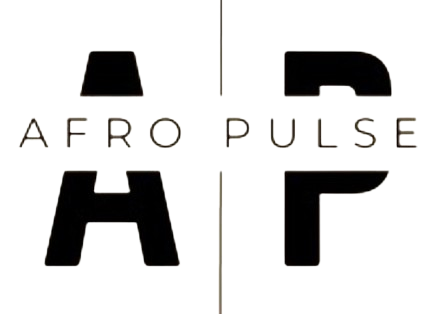Setbacks to Success: Let’s Get Personal

First off, thank you to everyone who’s been reading this blog, commenting, and following, it means a lot to me, and I appreciate it. Some of you may be wondering about my passion for sneakers, specifically the origin of that passion and why I decided to start blogging. Well, I’ll answer all those questions in this blog sub-series where I’ll chronicle all the aforementioned. Hopefully you get some value and entertainment from my ongoing journey.
In a nutshell, I’ve loved sneakers since I was a kid. My first pair of Jordans were Jordan 6 Infrareds my older sister bought for my 18th birthday. I owned numerous pairs of Nikes prior to that so you can say I’ve been a sneaker enthusiast ever since.
First Career Choice: Ballin!
After business school I worked in finance doing leveraged finance, mergers and acquisitions, and capital raising for companies among other things. Besides learning a ton, and working with a lot of bright people, my time in banking planted a seed in my mind that wouldn’t fully sprout for years to come. Initially it wasn’t clear to me what the seed was exactly but looking back it’s clear as day.
I’m going to get a bit technical now, but it’ll be quick. During my time in finance I got to know a good amount of commodities traders. In a basic sense, these are basically Wall Street types who make bets on where they think commodities prices will move in the future. When I say commodities, think gold, livestock, crude oil etc. The fact that they were buying and selling positions in commodities wasn’t at all interesting to me, we’ve all flipped stuff on some level. What interested me was how is it that these people are investing real money into commodities they will never see, let alone take physical possession of. The answer was simple, the commodities they were speculating on (“flipping”) are housed in locations where third parties verify existence and quality, at which point traders can then begin to buy/sell positions — it’s a bit more complex than this, but you get the gist.
This ingenious system that eliminates the need for speculators to take possession of the commodities they were speculating on stuck with me. After all, if you’re buying a thing for the sole purpose of selling it later (hopefully at a profit), why would you ever want to deal with the shipping and storage of said thing?
Groupon For Minorities?
After leaving the world of finance, I did a few other entrepreneurial things; I built and ran a Groupon variant focused on small, black owned businesses with a friend. It did ok, we made a little money, but at the time we didn’t understand online marketing and thus failed at properly scaling the demand side of the business. We wound that one down. The main thing I (thought) I learned from that experience was marketing is hard and mysterious.
Construction: Oh NO!
Next, I bought and ran a structural steel fabricator in the suburbs of Chicago. We fabricated structural steel for commercial businesses, think Walgreens, small hospitals, and Chase bank branches. This was right around the real estate crash in 2008. If you recall, this was shortly after Chicago was announced as a finalist city to host the 2016 Summer Olympics. Commercial construction firms throughout Chicago land were collectively licking their lips, us included. Unfortunately, Chicago was knocked out of the first round of voting by the IOC after being elected as one of the final four cities: Rio de Janeiro, Madrid, Tokyo, and Chicago. If Chicago won the right to host those Olympics, I would likely not be writing this blog, so silver lining; o) The main thing I learned about my time owning/running a steel fabricator, is NOT to be a construction sub-contractor, except may HVAC or electrical. Why you ask? Paper thin profit margins (even if you do everything perfectly), it’s a commoditized service — no real way to stand out, your too many degrees separated from the owner (the one who cuts the checks). I ended up closing the business.
Lady Gaga Cameo?!
After my stint in construction, I built a luxury storage facility under the Radisson Blu Aqua Hotel and Residences in the Lake Shore East neighborhood in downtown Chicago in 2013. Interesting side note, Lada Gaga had a condo in the building and almost became one of our customers. We met with one of her personal assistants regarding the prospect of her renting one of our large units. Apparently, she would go on insane shopping sprees on Oak Street and the Magnificent Mile (Michigan Ave.,) to the point where her condo didn’t have enough space to store all her stuff — first world problems, I guess.
The space is 5,700 square feet. We successfully received and moved over 11 tons of steel into the space, which is in the pedway level — under the building there’s a pedway underground walk-way system under certain parts of downtown Chicago, it comes in handy in the winter. One of my claims to fame is that I oversaw the transportation of all 11 tons of steel into the space without doing any damage to the hotel passages. We built 111 units of three sizes, with the biggest the size of a standard shed. I spent over $300k on the build out and owned and operated the space for almost 3 years. I sold the business to a Chicago based developer. I didn’t make significant money, but the facility is still running, thriving today. The main thing I learned from the experience is that people are accustomed to storing their belongings in largely filthy facilities. Thus, I didn’t need to go all out building luxury units, paying for climate control, and installing high speed internet.
NBA, NFL Athletes: Not the Ideal User Base
Ok, now back to sneakers and the seed living in my head. After my experience with the quasi-Groupon, construction business and luxury storage business, the seed living in my head started to sprout. My first attempt at cultivating the seed was to build a storage facility that stored sneakers for professional athletes, mainly NBA and NFL players. The problem I would be solving for them is helping them reclaim lost living space at their homes due to the exorbitant number of sneakers they bought and received from whatever sneaker brand they were signed to. It’s a real issue, some pro athletes receive numerous boxes per month of sneakers and clothing from their brands. You may be thinking, “why is that an issue, those guys are rich and live in mansions?” And you’re right about many of them having large living spaces. However, you’d be shocked to see how quickly a massive basement, garage or even guest house fills up with boxes when there’s a constant inflow of branded merch showing up in your driveway.
I interviewed a few current and ex athletes to learn about their specific pain points around merchandise storage. Most of the times it was the wife who had an issue because she was the one home navigating the minefield, or worst yet, a player gets traded and needs to relocate said merchandise to prep the home to go on the real estate market. It sounds trivial, but it is a major headache on top of all the other challenges that come with relocating.
I didn’t launch the sneaker storage business because it wasn’t profitable enough, and many of the athletes wanted concierge delivery and pick up service when they were in Chicago. So, if any of you are in a place that has an NBA team and inexpensive real estate, this is a model that could work for you.
Never Again
The next business I launched was a platform where you could buy and sell fractional shares of kicks. This was in 2018, before the other fractional share platforms like Rally Road hit the market. I hired a couple of engineers to build the platform, but they did a subpar job (over promised on their expertise level), which resulted in the platform being buggier than having a picnic next to an ant colony in the spring. The main things I learned from this experience was, a) invest more time in finding qualified engineers (it was my fault they didn’t measure up) and b) customer acquisition costs for a fractional share platform are far too exorbitant to scale to profitability.
As it became clear the fractional share platform would be a failure, and further investment would be putting in good money after bad, I decided to shut it down. I still own the code somewhere, whenever I think about it, I strangely crave picnic food lol.
KickPredict
All the previous endeavors bring us to current date. After closing the fractional share platform, the seed that was planted during my banking days finally became clear. Why not build a platform where users can speculate on sneaker prices by predicting if they would rise or fall? That’s when I hired engineers to build KickPredict in 2021, a platform where you go long or short on sneaker prices the same way Wall Street commodities traders go long or short on commodities.
In the next post of this series, I’ll cover the following:
- Designing Version 1,
- Finding the Right Engineers,
- Launch (Acquiring the first 1,000 users),
- Setting the Rules,
- Fighting PayPal,
- New Features,
- The Future.
I hope you come along for the ride!





